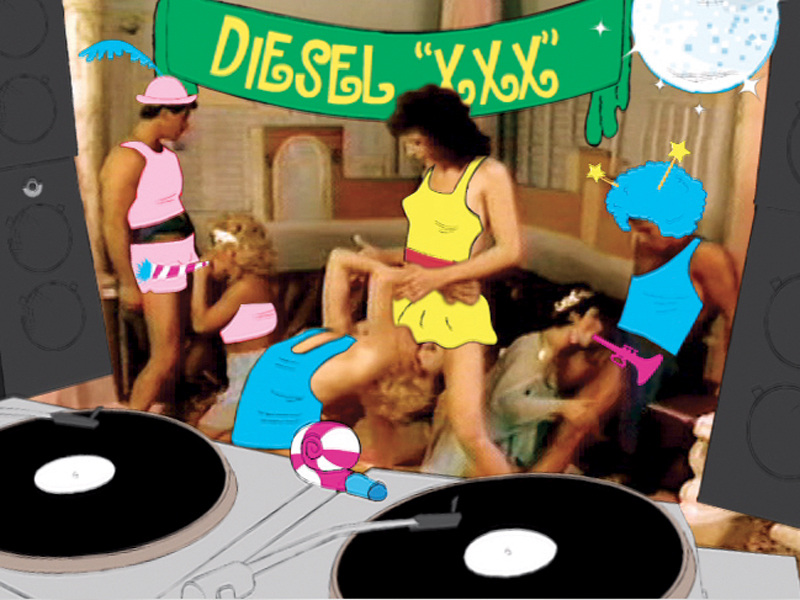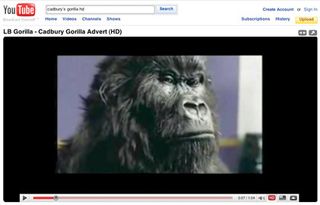How to create the perfect viral campaign
With the right idea and a little planning, you can own the web

Creating the perfect viral campaign is both much harder and much easier than it looks.
Easier because all we're really talking about is making something people like and want to share; harder because there are lots of things to mess up along the way.
So what do we mean by the perfect viral campaign? Well, as a punter I'd want something hilariously funny and clever, which won me kudos for sending it to my friends. It should also make me really like the company behind it (and at least want to consider the product it was punting). That's pretty much a 10/10.
What I wouldn't want is some tired old rubbish, cynically designed to appeal to The Internets by some marketing hack that bored me, wasted my time, made me angry and made me hate everything about the company and product. That would be decidedly less than 10/10.
Where to start with virals
So, funny, clever, want to buy stuff, but how? First off, don't start out thinking about what your client wants. Come to that later. Start by thinking about what the audience wants. To do this, you'll need to get to know them intimately, maybe even become one of them. This will probably be both time-consuming and complex, but it can also be great fun.
Next, write something that's either enjoyable, informative, useful, shocking, sexy, cute, or whatever else it takes to entertain the audience. If you (like me) can't be entertaining, then find someone who can. If you can't find someone who can, give up.
Get the best Black Friday deals direct to your inbox, plus news, reviews, and more.
Sign up to be the first to know about unmissable Black Friday deals on top tech, plus get all your favorite TechRadar content.
Simply entertaining people isn't enough, though. Lots of very entertaining content resolutely fails to go viral. Some people watch it (yay!), but they don't talk about it (boo!). And if they don't talk about it, they're unlikely to share it – and virals are all about people sharing stuff. So introduce something that will make the masses talk.
Uncertainty, odd details, references to memes and/or celebrities are always a good bet. Eventually, you should have an idea that, with some skill, expertise and a bit of luck, could be turned into a big successful viral. Well done, have a biscuit. That was the easy part.
The hard bit is saying something good about the product at the same time without (in italics because it's important) upsetting what was good about the idea in the first place. There are no rules here, no lists of surefire ways to succeed.
As I said before, you need to know your audience – especially the kinds of things they're talking about, what content they're watching with specific reference to the sector, or better still, the product you're advertising. Incorporating elements of this general 'buzz' into your creation will get you a long way.
But if you're essentially nicking other successful ideas, be very careful – at the very least, make sure you add to the idea in some way. Otherwise you'll get the savage online kicking you so richly deserve.
Bear in mind as well, that although you're creating a marketing campaign, your audience's primary reason for watching what you make will be for entertainment. For them, the marketing bit is secondary. This means you're competing with brilliant million-pound TV ads such as the Cadbury's gorilla or Evian's rollerskating babies. You're also competing with the likes of us who've been around the block a few times and know what we're doing. Face your destiny with courage, young grasshopper.

The other thing to remember is that just when you start to think you know everything, it all goes and changes. The internet is a ludicrously dynamic place that evolves in odd and unpredictable ways. That's what makes the job brilliant, but also what stops us from sleeping properly.
For instance, about two years ago, YouTube and blogs came along and changed viral marketing radically. Virals generally stopped being "edgy" and crass, relying on slapstick and boobs, and grew up to become part of polite society.
The Twitter effect
It took a while to adjust, and now, just when the dust has settled on that major upheaval, Twitter is changing everything again. No one's quite sure how yet, beyond the obvious (people link to virals on it), but it promises to be pretty fundamental. In fact, it may well make the term viral marketing itself redundant – because any successful marketing will be viral.
Like any discipline, creating a successful viral campaign requires dedication, creativity, craft, experience and skills honed over time. One of the best ways to get your throat torn out by one of our creatives is to say something like, "Wow, you work in viral marketing? That must be great! You get to sit around all day dicking about and coming up with stupid ideas…" Wrong.
A good idea requires the judicious application of blood, sweat and tears, in more or less equal measure. And coming up with an idea is just the start. Now you've got to make it, produce it, execute it.
Many ATL (Above the Line) agencies rather dismissively outsource this job to production companies. Why? Because it's a massive headache and not hugely profitable. However, it's very important, and at The Viral Factory (TVF) we think anyone who doesn't have full, hands-on control of the production process is a fool. Let someone else bring your idea to life and it won't necessarily be how you want it.
Here are some practical pointers:
1. Anything that smacks of corporate might, lies, subterfuge, fear-mongering, double speak, taking yourself too seriously or censorship is bad.
2. Overt commercial messages are fine, as long as they're entertaining: the Will It Blend? campaign was a brilliant example of what was effectively a product demo being made web-friendly and relevant.
3. The 'us vs. them' mentality that many corporations still adopt doesn't play well. Slick, glossy content is generally not well received, whereas more lo-fi accessible material is, because it's something the audience could make themselves if they wanted to (or at least it's perceived that way), so there's a sense that the playing field is level.
We did a campaign for Samsung that involved drawing a little stickman character onto someone's body to create a stop-frame animation. We could have post-produced the whole thing and made it look great for the money we had. Instead, we did it for real, which looks a bit ropey and was an absolute ballache.
But it was hugely popular (it was watched 10million times on YouTube alone) because the viewers were able to engage with it on their own terms. Any one of them could have made it, had they had the patience and imagination. That changes the relationship between them and the brand.
4. Optimism and positivity are good. But then so are cynicism and dark humour. Less good is setting up the audience for a really great experience and then not delivering (we made this mistake recently and got a right kicking for it. From the audience, not the client. And no, I'm not going to say which campaign it was).
5. Let human qualities show through, rather than hiding behind a corporate mask. Companies, even big scary ones, are generally staffed by people, usually quite nice ones. Letting their voices come through is much more engaging than issuing decrees in the weird, dehumanised, faintly sinister corporate double-speak nonsense that has evolved over the last 20 years.
Re-reading this, I guess you could sum it up thus: be nice, be honest, be real. So there you go, that's the creative bit, and I honestly hope it helps, even if you become competitors and end up beating us at our own game. But that's only the half of it. A perfect viral campaign needs seeding.
Matt Smith is Director Enterprise UKI at Citrix and helps to guide his team to think differently and position solutions in partnership with their customers and partner ecosystem.
Most Popular


